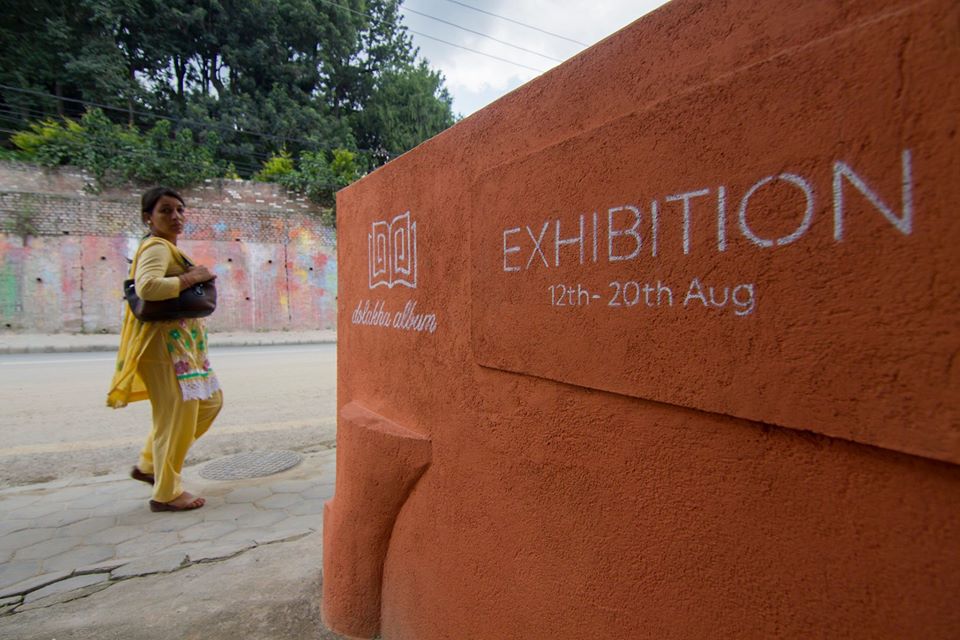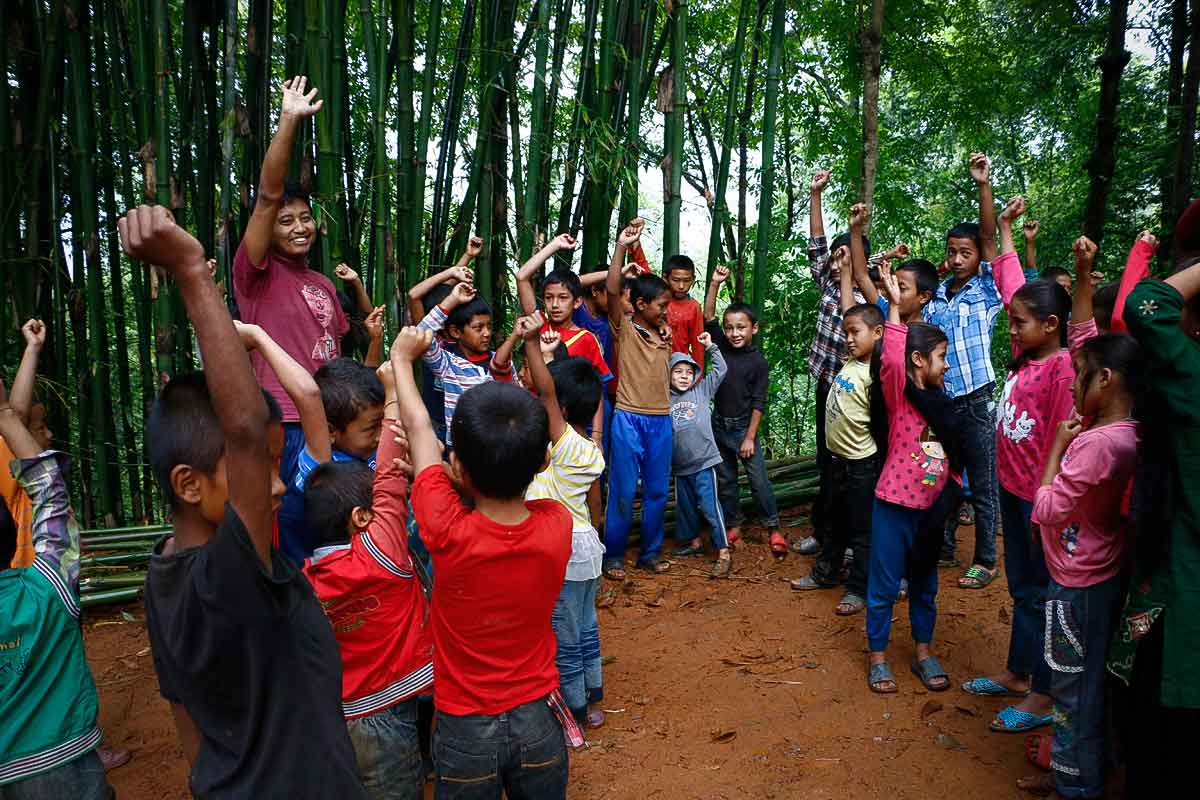Various Articles published about Dolakha Album: a curated community homestay art residency+exhibition hosted by Artudio and curated by contemporary artist of Nepal and Founder of Artudio, Kailash K Shrestha on National Dailies.
PRINT MEDIA COVERAGE
The persistence of memory
By Pranaya SJB Rana


Photo by: Rawjan Kusuley
The persistence of memory – Pranaya SJB Rana, Five contemporary artists from Kathmandu explore memory and loss in Dolakha’s Gairimudi Sep 3, 2016- Each object holds a history, a patina of memories that have accumulated over the years, shaped by remembrances like a pebble smoothened by an eddy, like a dirt track fashioned by the warmth of naked feet. Every object is a palimpsest, written and rewritten.
A disaster creates a disjunction. The order of things is disrupted and memories crumble with the material objects that housed them. What would be passed down as inheritance lies in danger of being lost to the currents of time, obliterated like much else. Some sense must be made of the rubble and memory—written repetitively and differently—must be preserved. The perpetuation of memory is thus a human act against the inevitable annihilation of time. And though inexorable, the answer must always be in the attempt.
What memory does a home hold? The rafters in its ceilings, the wood in its windowpanes, the dirt in its foundations. When a home collapses, do the trove of memories it holds burst open like Pandora’s Box and let loose all its secrets? Or does that secret stash crumple quietly into itself, emptying its innards into the debris of mud and mortar, cement and stone? Without homes, what becomes of a people, a community?
In Dolakha’s Gairimudi, the persistence of memory is a particular thing. It seeps out through song and silence, the air and the earth.
In May, five artists spent a week in Gairimudi, living amongst locals, playing with the children and listening to stories, as part of a short-term artist residency curated by visual artist Kailash K Shrestha and co-curated by Nischal Oli. The five were of varied disciplines—Sujan Dangol, who works in new media; Surendra Maharjan, who does mostly printmaking; visual artist Sandhya Silwal; multimedia artist Rajan Shrestha who works primarily with photo, audio and video; and filmmaker Abhimanyu Dixit. They were joined by a local artisan, Chhabi Bahadur Shrestha, who weaves bamboo, and five international artists from the Global Art Collective.
Among these artists, perhaps Sujan Dangol’s sculpture of objects from Gairimudi explored instilled memory most explicitly. Constructed out of material found and donated by the community, Dangol’s piece attempts to fashion a collective memory of the community, as exemplified by the objects chosen for the sculpture, whether an old school trunk, empty bottles of alcohol or debris from broken homes. In creating a monument, Dangol’s was perhaps alluding to a history that is shared between the objects that come from different homes and different families. When an entire country undergoes a tragedy, the trauma of loss becomes communal. Personal history is no longer parcelled off within walls but is conjoined, forcefully, by the vagaries of nature.
For the others, memory passed differently, whether through a song penned by a tenth grader and recorded together by Rajan Shrestha, or the ubiquity of Gairimudi’s bamboo in the works of Sandhya Silwal, Surendra Maharjan and Chhabi Bahadur Shrestha. Bamboo now lines many makeshift houses in Gairimudi as old homes still lie with their walls collapsed, exposing black holes that resemble hungry maws.
Bamboo and wood salvaged came into play for the pyrotechnic finale of the project. The Global Art Collective artists asked the community to each bring in a piece of bamboo from their homes, which they constructed into a giant structure spelling out the word ‘chinta’. Children were encouraged to scrawl their worries onto the wood. Then, fires were lit and the entire structure went up in flames, a la Burning Man. In burning up the wood and scattering its ashes into the wind, the symbolism is blunt. But what the spectacle asserts is that memory persists in objects imbued with meaning.
Abhimanyu Dixit’s film, born out of a little kid’s recurring dream, is a meandering journey to a different kind of memory, an idealised past represented by buildings that are still standing, which the earthquake hasn’t yet brought down. Dixit worked with the actors, all Gairimudi locals, in a freewheeling style, allowing them to improvise and take active part in the creation of their own representation. Although fictional, the film sublimates the present sense of loss and a yearning for the past into a reluctant, but nonetheless inevitable, acceptance of what has occurred.
Kailash Shrestha titled the residency ‘Dolakha Album’, akin to a photo album where Dolakha is but one page, the next being Manang. Shrestha’s intention behind the project is seemingly to explore the innate predilection that all human beings have towards the aesthetic. The purpose was not to impose a preconceived notion of what is art on the Gairimudi community but instead, build a rapport with the people, the places and their objects to build an organic understanding of what is art to this particular community and this particular space. Outside of the whitewashed walls of Kathmandu’s galleries, art flourishes on mud flats where children build dioramas out of leaves, sticks and stones, and a middle-aged artisan who has been weaving bamboo baskets for decades finally comes to terms with the fact that what he is doing is no less art than anything else.
Dolakha Album is an experiment in influence but it is also an exploration of how much memory the objects of a community hold. Gairimudi’s rato mato and bamboo are signifiers, in that they locate the community and its history on a timeline. This is who they are in this particular time and these are their inclinations. The project asserts the historicity of art—good art is born out of specifics but speaks to the universal. In these particulars, the stuff that makes up Gairimudi complements the breathing bodies that make up the Gairimudi community; it is not one or the other.
Gairimudi and the pieces created by the artists involved showcase just how resolute memory is. Nothing is ever lost, simply transmuted into something else. Memory is never recalled, it is always rewritten. A wooden beam that once held up a two-storey home is now repurposed to support a temporary shelter.
Art, like life, is never about complacency, as Dolakha Album seems to affirm. Gairimudi is not about resilience; Gairimudi is about vibrancy. Gairimudi is not about resignation to the fates but a pronouncement that life cannot be dull, it must echo and rebound. It must pass laterally into others—things and people—into song and onto film and as smoke and ashes. thinkinink.wordpress.com Published: 03-09-2016 09:18
Published: 03-09-2016 09:18

An article by Mukesh Malla on Gorkhapatra National Daily

Photograph published along with an article by Mukesh Malla on Gorkhapatra National Daily

An Article on Himalaya Times Nepali National Dialy

An article published on Nagarik National Daily

An article by Devendra Gautam published on Republica National Daily

An Article published on The Himalayan Times National Daily by Sangita Shrestha

Photograph published on The Kathmandu Post National English Daily

Photograph published on The Kathmandu Post National English Daily


Photo and news coverage on M&S Vmag
ONLINE COVERAGE
RATOPATI.COM
http://www.ratopati.com/sahitya/72719/
M&S VMAG
http://mnsvmag.com/#/news/2016-08-16/dolakha-album-exhibition.html
STREETNEPAL.COM
http://streetnepal.com/artudio-hosts-dolakha-album/
HAMRO DOLAKHA.COM
http://www.hamrodolakha.com/2016/08/8182.html
HIMALAYATIMES
http://ehimalayatimes.com/ehimalayan-epapers/
THT
http://epaper.thehimalayantimes.com/Details.aspx?id=11151&boxid=145252995&dat=8%2F16%2F2016
EKANTIPUR.COM
http://kathmandupost.ekantipur.com/news/2016-08-14/dolakha-album-opens-at-artudio.html
KHBARDABALI.COM
http://www.khabardabali.com/2016/08/88040/

Dolakha Album Art Residency review on Nagarik National Nepali Daily by Yadav Thapaliya

Dolakha Album art residency news on Himalaya Times National Daily

Dolakha Album on Canvas weekly
EHIMALAYATIMES.COM
http://ehimalayatimes.com/2016/05/15/epaper/
NAGARIKNEWS.COM
http://archive.nagariknews.com/nagarik-sanibar/story/73369.html
HAMRODOLAKHA.COM
http://www.hamrodolakha.com/2016/05/5151.html
SCREENNEPAL.COM
http://screennepal.com/2016/05/14/9400/
SETOPATI.COM
http://kala.setopati.com/news/3603/
THENEPALNOWPROJECT
http://www.theartofencouraging.com/dolakha-album-exhibition-opens-friday-12th-august-2016-6-pm-artudio/


















